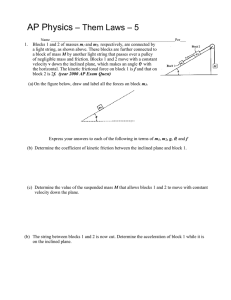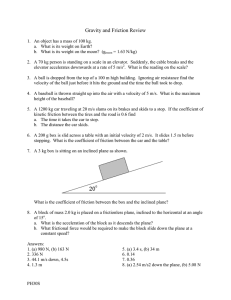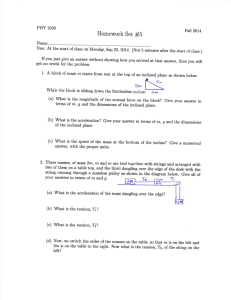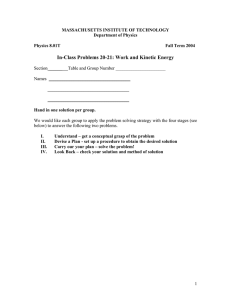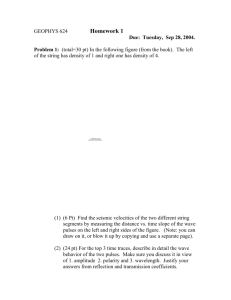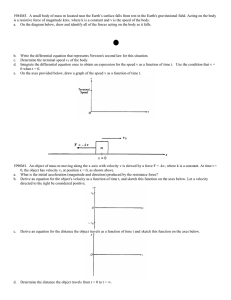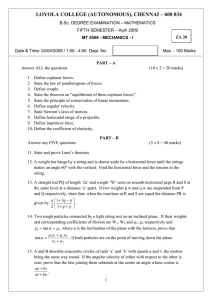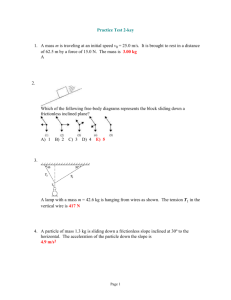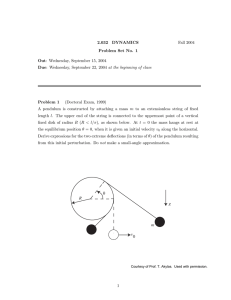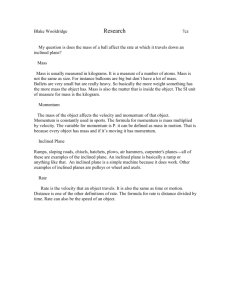Name: 1) Two small blocks, each of mass m, are connected by a
advertisement
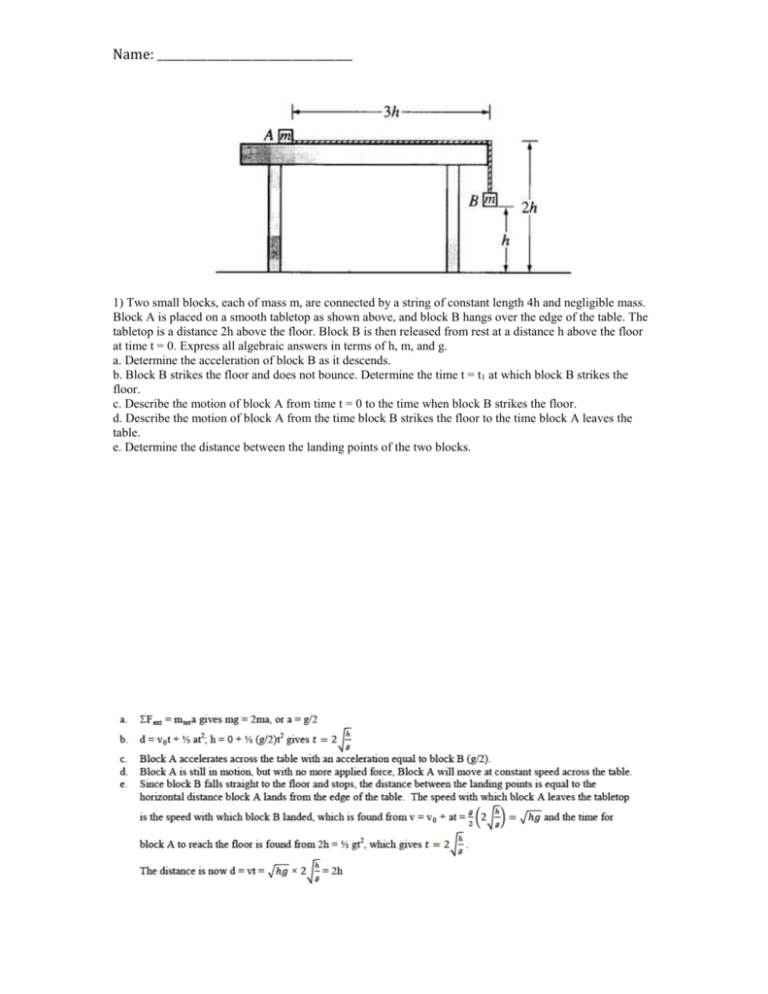
Name: ___________________________________ 1) Two small blocks, each of mass m, are connected by a string of constant length 4h and negligible mass. Block A is placed on a smooth tabletop as shown above, and block B hangs over the edge of the table. The tabletop is a distance 2h above the floor. Block B is then released from rest at a distance h above the floor at time t = 0. Express all algebraic answers in terms of h, m, and g. a. Determine the acceleration of block B as it descends. b. Block B strikes the floor and does not bounce. Determine the time t = t1 at which block B strikes the floor. c. Describe the motion of block A from time t = 0 to the time when block B strikes the floor. d. Describe the motion of block A from the time block B strikes the floor to the time block A leaves the table. e. Determine the distance between the landing points of the two blocks. Name: ___________________________________ 2. Blocks 1 and 2 of masses ml and m2, respectively, are connected by a light string, as shown above. These blocks are further connected to a block of mass M by another light string that passes over a pulley of negligible mass and friction. Blocks l and 2 move with a constant velocity v down the inclined plane, which makes an angle θ with the horizontal. The kinetic frictional force on block 1 is f and that on block 2 is 2f. a. On the figure below, draw and label all the forces on block m1. Express your answers to each of the following in terms of ml , m2, g, θ , and f. b. Determine the coefficient of kinetic friction between the inclined plane and block 1. c. Determine the value of the suspended mass M that allows blocks 1 and 2 to move with constant velocity down the plane. d. The string between blocks 1 and 2 is now cut. Determine the acceleration of block 1 while it is on the inclined plane.
